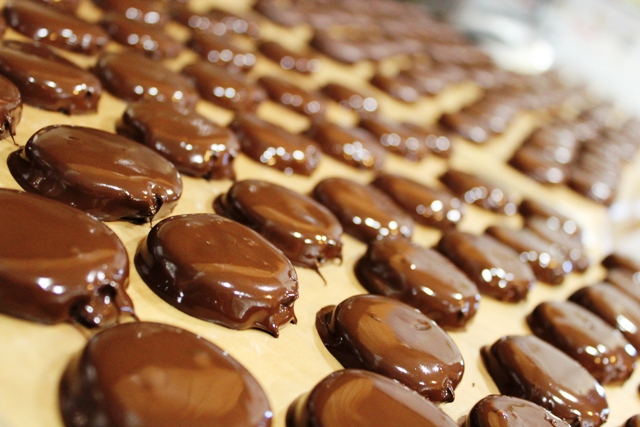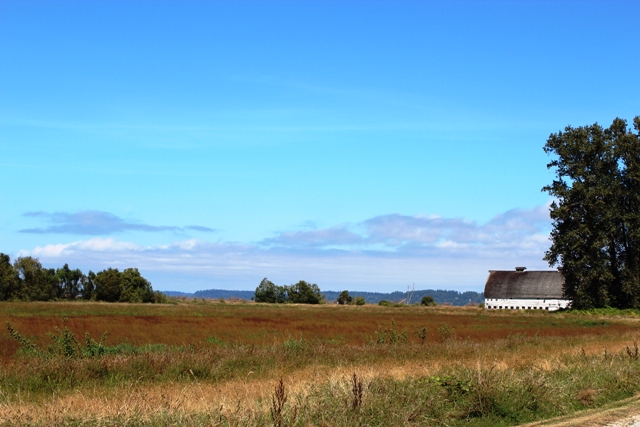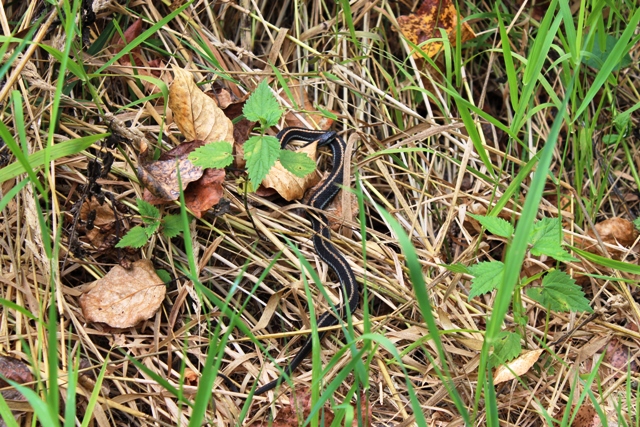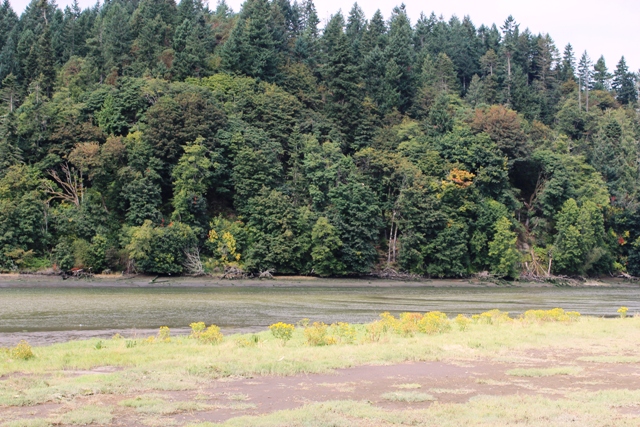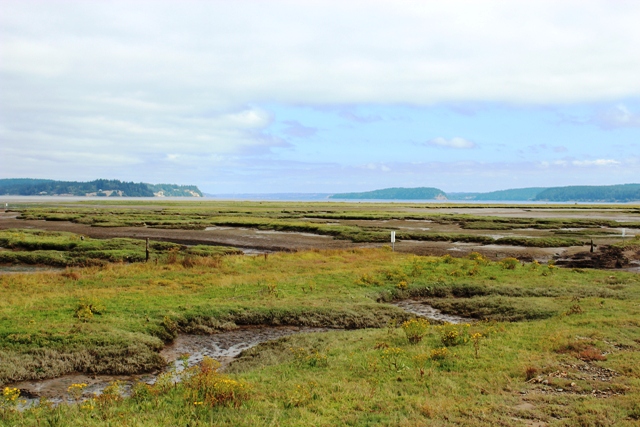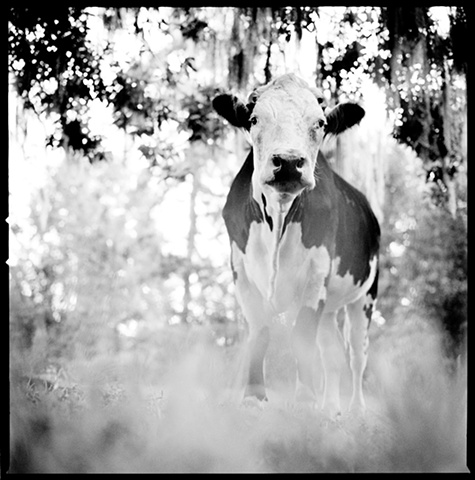
I’ve had some requests from a number of readers now to talk a bit more about my dissertation research. So I thought I’d give you an update on where I am in the process. I spent the late-spring/early summer trying to gain access to small-scale dairy farms in the area. I focused on mostly the small-scale family farms who sell at Puget Sound farmers markets and who market themselves as organic/humane/pasture-raised/etc. Out of more than 15 of these farms, only one allowed me to visit. Some farms were downright rude on the phone. Others stated they were simply too busy to welcome visitors. Quite a few cited ‘biosecurity’ as a reason visitors weren’t allowed on the farm. When I asked what biosecurity meant to them, they didn’t know. This part of the process was all at once frustrating, surprising, and illuminating. I specifically chose farms whose marketing materials urged people to come and see for themselves what the farm was doing. When I tried to take them up on that publicly made offer, they were unwilling to have visitors. This is a fact I wish more consumers/supporters of the “humane meat & dairy” movement knew—that the declared transparency is, for whatever reasons, often not transparent at all.
The kind farmer who did allow me to visit his farm was a wealth of information. He was incredibly open about the process of raising cows for dairy production and he answered every question I had. He showed me the “maternity pen,” where around 60 pregnant cows within two weeks of giving birth were confined. Directly adjacent to that pen was a pen with the “milking string” of cows—those actively producing milk. They spent their day in this pen, except for the three times per day when they were herded (20 at a time) into the milking ‘parlor,’ their teats attached to milking machines, milked and returned to their pen until the next milking. Two months out of the year, called the “drying off period,” which is the two months leading up to their birthing date, the cows were moved offsite to another farm, where apparently they had some access to grass. The other 300 days of the year, they were at this farm, actively being milked or waiting up to two weeks to give birth, after which their calf is removed within two days and the mother is moved into the pen with the other members of the “milking string.” A livestock buyer would show up to buy the male calves, and the female calves who might be useful as replacements for the ‘dairy herd’ are moved to another farm to be raised until they are of mature, reproductive age and can join the cycle of artificial insemination, pregnancy, birth, milking, artificial insemination, and so on. These cows, unlike those in industrial production, would be used for 8-10 years for milk production after which they would be sent to slaughter. The farmer himself said that they probably end up at McDonald’s since their bodies are so worn out. He said that if you’re eating a McDonald’s burger, you’re most likely eating a ‘dairy cow’.
After the farm visit, I visited a nearby ‘livestock’ auction for dairy market day. These were mostly cows and calves who were being sold as replacements for dairy herds. In other words, they were all mostly still productive as milk producers. There were about 15 cows and calves auctioned off in 20 minutes. ‘Livestock’ auctions are public spaces and anyone can attend and watch the auction. There was a father and his two young daughters there to see the animals. One of the daughters approached me and held up a picture book, called Buttercup’s Lovely Day, with a classic picture of a beautiful black and white Holstein on the cover with big long eyelashes. She said, “I’m going to see the cows today!” In fact, the auction space is a highly social event. There are many people who come just to watch, have some burgers and pie at the cafeteria in the auction house, catch up with old friends, and see what the offerings are for the day. The vibe at an auction is that buying and selling live beings is the most normal and natural thing in the world. This particular sale marks a mid-point in the life of a cow used for dairy production. Cows and calves bought at this particular sale will most likely continue to be used in dairy production for at least of few years before they are sent to slaughter. Cull market day is the day when the cows who are deemed no longer productive are auctioned off for meat. I plan to attend one of these sales in the near future, but I’ve been putting it off for obvious reasons.
A less depressing part of the research was my visits to two prominent animal sanctuaries earlier this summer. Both had bovine animals who in some way were connected to the dairy industry. At one, I met two cows formerly used for dairy production. At another I met male calves who had been rescued from a short future in the veal industry who had been able to grow up at the sanctuary. Sanctuaries, in many ways, are hopeful spaces. They are spaces where humans, who believe fundamentally that our use of animals is wrong, have created an intentional community—a sort of bubble—where animals live the lives animal rights activists dream of for animals. They are simultaneously a hopeful vision of the future and a practical way to deal with the horrors of the present.
After the sanctuary trip, I spent the better part of the summer reading and doing online research about the peripheral-yet-essential industries attached to the dairy industry. ‘Breeding farms’ where bulls are forcibly ejaculated/masturbated either by hand or machine (a process called electro-ejaculation) are an essential part of dairy production. Semen is collected, package and mailed around the country for use in the artificial insemination of cows. The rendering industry is the industry that disposes of all offal from slaughterhouses and the bodies of animals who died before they reached slaughter (and thus could not be used for the food supply). These remains are processed in rendering plants into a range of different products—cheap canned meats for human consumption, food for companion animals, bone meal, additives to the feed for other animals in the food system, fertilizers, fat for soaps and body care products—the list goes on and on. And then of course, in addition to the mainstream slaughter industry, there is the veal industry to think of—the inevitable end to many of the calves who are born into the dairy industry.
The dissertation itself is starting to take shape in my mind and I’ve organized my thoughts into three themes that have emerged out of the research I’ve completed thus far: 1) politics of access 2) gender, sexuality and species, and 3) educational paradigms. I still have a few more sites to visit for fieldwork and so this will most likely change and evolve. Politics of access is important because of the overwhelming difficulty of accessing farms where cows are raised for dairy production. As an academic researcher, I cannot engage in deception, and so I have to declare up front that I am a PhD student doing research. There are also the ag-gag laws and other legislation in some states that make using deception to gain access to these spaces illegal—a vast and important topic all on its own. The section on gender, sexuality and species looks at the actual experience of animals in the dairy industry and the ways in which their lives are manipulated and exploited based on gender and species. Educational paradigms are important because of the ways in which practices of farming are produced and reproduced through educational spaces—in other words, the ways in which practices of dairy production are reinforced, perpetuated and normalized.
Last week, I received a lovely email from a reader and one particular part may be of interest relating to this subject. She wrote,
The first reason I wanted to reach out to you is that I think your dissertation work sounds so very interesting and heart-breaking, and I would love to hear more about it. I am so curious as to how you are able to delve so deeply into such a cruel industry and see an animal as an individual and not completely break down or shut off knowing that his or her fate is out of your hands. I would love to get more actively involved in animal advocacy, but I am so emotional about any form of cruelty and injustice, that even the tiniest bit of exposure shuts me down for days. I, too, feel that helping animals is my calling, but I have a very difficult time getting past my own mental/emotional roadblocks. How do you get past yours?
Great question and it took me a few days of mulling this over to answer. Honestly, at first, I had no idea how to answer this because I wasn’t sure what is going on in my head and heart that enables me to go into these spaces and come out standing. Here’s what I finally wrote in response:
I’ve been mulling over your questions about the dissertation research, and specifically the issue of how to immerse yourself in this kind of work without being crushed by it. This is a hard question, partly because, in many ways, I am crushed by the work I do. It’s horribly sad and I feel overwhelmingly helpless much of the time. This is particularly true when I’m doing fieldwork and encountering individual animals who are currently being used in the industry. For instance, I went to a dairy ‘livestock’ auction and sat there the whole time with the knowledge that most of the individuals there were being sold and bought for slaughter/meat production. I knew there was nothing I could do about those 15 or so animals who were auctioned off, but I do know there is value in witnessing. Being there as a witness and then coming back and writing about it for my dissertation, on the blog, in articles, etc. and telling people about that experience–what cows used for dairy are experiencing right now as we speak has an active power to it. There’s some comfort in that–the belief that witnessing and sharing these stories will make a difference in how people think about the individuals we exploit for food.
In the moments at the ‘livestock’ auction, I worked hard to put aside my emotional reactions and I tried to think of myself as a vessel of information gathering. My emotions were not as important as the information I could gather about the experience of the cows in this space. The same went for when I visited a local dairy farm. At one moment or another I would feel that creeping sense of some all-consuming emotional reaction and I would try to think to myself, “Katie, suck it up! This moment is not about you; it’s about those individual cows and the broader dairy industry as a whole and the best thing you can do for them is hold it together and do the work.” Miraculously, I’ve been able to do that–set aside my own emotions in the moment to get the work done. This is an odd experience for me because I’m an extremely emotional person. And I don’t ‘suck it up’ for long. After I leave these spaces, I get into my car, I drive out onto the main road and I cry myself home. Sometimes I lose it at totally random times–like I blogged recently about Sadie’s death, a cow used formerly in dairy production living at Animal Place in CA. For some reason, all of my pent up sadness and devastation about dairy and animals in food system more generally came out when I heard about Sadie and I cried for hours while I weeded my garden.
I think sometimes we tend to think of emotion as a bad thing and that negative emotions, like sadness, should be avoided. But I think emotion is one of the best tools we have. It’s what keeps us going and keeps us tuned into what’s important–making a difference for animals. There’s a Buddhist practice that I try to keep in mind every day…It’s “Arise, Abide, and Cease.” We can let these negative emotions arise, we can let them abide in us and try to understand them, but then we must let them pass through us so that we don’t get bogged down by them because that’s when they’re most damaging. I think it’s so important to have these emotions–to get in the car after witnessing suffering and cry and be sad about it. But it’s also important to let that acute sadness go, to say “There may not be anything I can do in this moment for this cow in front of me and this is really fucking soul-crushingly sad, but I will tell her story and I will do something every single day to make sure that a cow or any other animal in 5 years, 10 years, 50 years, does not have to experience what she is experiencing right now.” For me, it is precisely this deep sense of sadness I have, mixed with a lot of hope, that motivates me.
All that being said, I think there are also places in the movement for all of us to help in ways that work for us. Sadness isn’t always a good motivator–it can often be completely paralyzing and, as you say, the tiniest bit of exposure can shut us down for days. There are amazing people who are able to go and work undercover in slaughterhouses, but I’m honestly not sure if I could handle doing that kind of work. We don’t all have to go undercover in a slaughterhouse to make a difference. There are so many AMAZING ways to be an advocate for animals without exposing ourselves on a regular basis to their suffering, too. Being an educator, talking to adults, teens and children about animals, lobbying for animal rights in local and national government, doing art or music that educates about the plight of animals, giving a home to an animal who needs safety and care, volunteering at a local sanctuary, helping fundraise for organizations who are doing work you believe in, getting a job in an organization that works to make to the world better for animals, etc.
All that being said, I’m also a big practitioner of compartmentalization and avoidance. For instance, I’ve been avoiding another visit to the auction yard all summer long. I’ve been avoiding getting rejected by another bunch of farms through harrowing and uncomfortable phone calls. And some days, I just pretend I’m not doing a dissertation at all—I work in the garden, I cook, I spend time with the animals and friends, I go to Pigs Peace, I write fun, fluffy posts for my own blog and others (like the one on dancing last week or the guest post for Alicia Silverstone—how to make kids’ clothes).
How do you all deal with your own emotions in order to do the work that needs to be done? What other ways can you imagine to help the world for animals that do not involve confronting animal suffering on a regular basis?
 Follow
Follow


